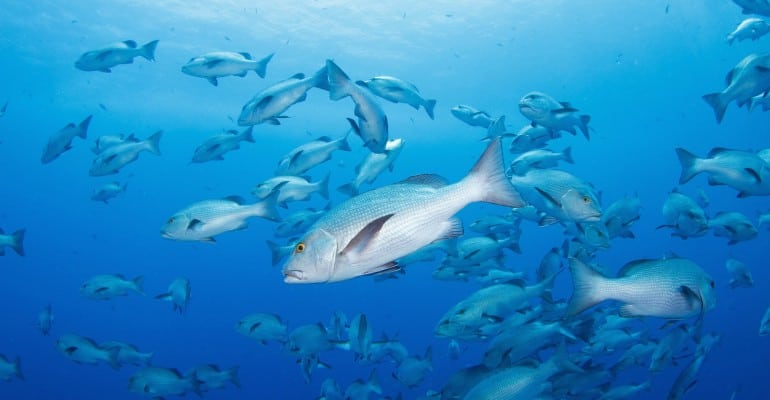Gov. John Bel Edwards announced Thursday (May 25) that the Louisiana Department of Wildlife and Fisheries (LDWF) plans to conduct an innovative pilot program designed to help recreational anglers battling short seasons for red snapper in federal waters.
The two-year pilot program will incorporate the use of handheld technology to produce real-time data on what anglers are catching. Additionally, anglers won’t have to fish their limit during a particular season. They will be able chose what days are best for them to go fishing.
Edwards, who has consistently supported state management of Gulf waters, said, “I asked Wildlife and Fisheries to develop a program that could eventually lead to Louisiana controlling red snapper fishing, even in what is determined to be federal waters. This pilot program could not come soon enough as the federal government has limited anglers to just three days to fish red snapper this year.”
LDWF Secretary Jack Montoucet said, “Just like the governor, we have heard from anglers across Louisiana and it is clear what they want most is the flexibility to fish for red snapper when it makes sense for them and their families. So we are going to test a new way of doing this. Instead of using a season, we are going to try giving fishermen a set number of red snapper that they can catch in federal waters and ask them to record that data on their smartphone.”
The pilot program – to be in operation in 2018-2019 – is the linchpin of LDWF’s Exempted Fishing Permit Application for State Management Pilot Project (or EFP). It has been delivered to the National Oceanic and Atmospheric Administration and is expected to be deliberated by the Gulf of Mexico Fishery Management Council at its next meeting in June.
Here’s how the EFP program will work. There will be 150 study participants selected by random drawing and subsequently contacted by e-mail. They will have the choice of accepting or refusing to participate. If that angler declines, then another one will be chosen at random. The participants would be able to catch 25,000 pounds of red snapper per year. The anglers would have to abide by the federal size limit. The EFP program would have no daily bag limit and the total limit per EFP participant would be determined by the number of fish allocated to each participant.
What this program is attempting is several fold, Montoucet said. “We are trying to show we can scientifically monitor the red snapper caught in the federal waters, provide anglers with more days of access to the fish and allow them to make larger catches. And most importantly, the state wants to show that we can use state-of-the-art-technology to safely control the red snapper population on our own.”
Participants in the pilot program will be recording the fish they catch and throw back on their smart phone and with that real-time data. Using that information, LDWF will ask the federal government to increase the amount fish allotted to private anglers in the future.
“As a fisherman myself,” Edwards said, “that sounds like a lot better system than squeezing all of my red snapper fishing into June when there might be bad weather or when family obligations can get in the way.”
To see the complete proposal and other parts of LDWF’s larger red snapper management program, go to http://www.wlf.louisiana.gov/document/documents.
The Louisiana Department of Wildlife and Fisheries is charged with managing and protecting Louisiana’s abundant natural resources. For more information, visit us atwww.wlf.la.gov. To receive LDWF email alerts, signup at http://www.wlf.la.gov/signup.





